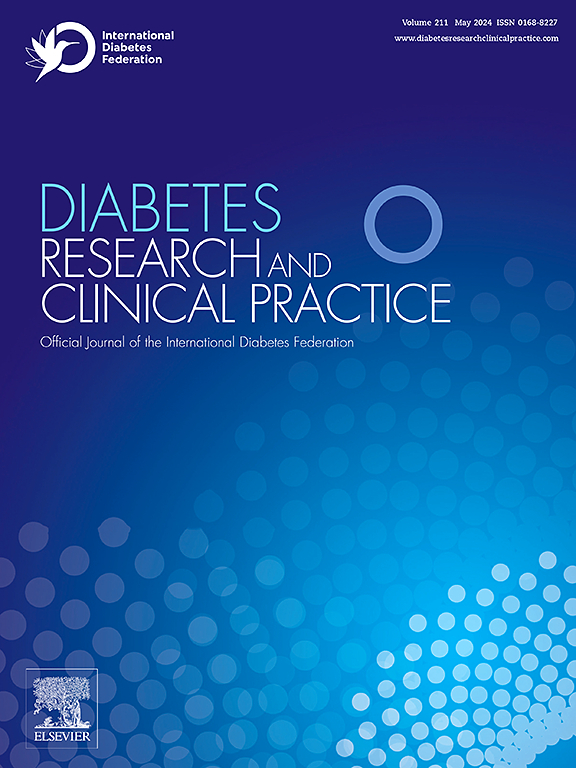Prognostic value of the Glucose-to-Albumin ratio in sepsis-related mortality: A retrospective ICU study
IF 6.1
3区 医学
Q1 ENDOCRINOLOGY & METABOLISM
引用次数: 0
Abstract
Aims
To investigate the prognostic value of the glucose-to-albumin ratio (GAR) in predicting 30-day and 90-day mortality in septic ICU patients.
Methods
Kaplan-Meier analysis with log-rank tests assessed survival by GAR quartiles. Multivariable Cox regression and restricted cubic splines (RCS) explored GAR’s relationship with mortality. ROC curves evaluated predictive performance, and Boruta identified key variables. Machine learning models assessed GAR’s predictive ability, with indirect effects analyzed through anion gap and BUN.
Results
Quartile 4 exhibited the lowest survival probability (log-rank p < 0.0001). GAR demonstrated the highest AUC for 30-day (0.66) and 90-day (0.65) mortality among individual predictors, while the stacked model achieved an AUC of 0.826. Cox regression showed GAR was independently associated with both 30-day (HR: 1.071 (95 % CI: 1.063–1.078, p < 0.001).) and 90-day mortality (HR: 1.071 (95 % CI: 1.064–1.078, p < 0.001). RCS analysis revealed an L-shaped relationship between GAR and mortality.
Conclusions
GAR is a strong predictor of 30-day and 90-day mortality in septic ICU patients. Incorporating GAR into clinical risk models could improve decision-making and sepsis management.
血糖与白蛋白比值在败血症相关死亡率中的预后价值:一项回顾性ICU研究
目的探讨糖白蛋白比(GAR)对脓毒症ICU患者30天和90天死亡率的预测价值。方法采用kaplan - meier分析和log-rank检验,以GAR四分位数评价生存率。多变量Cox回归和限制性三次样条(RCS)探讨了GAR与死亡率的关系。ROC曲线评估预测性能,Boruta确定关键变量。机器学习模型评估GAR的预测能力,并通过阴离子间隙和BUN分析间接影响。结果第4条的存活率最低(log-rank p <;0.0001)。在个体预测因子中,GAR在30天(0.66)和90天(0.65)死亡率方面的AUC最高,而堆叠模型的AUC为0.826。Cox回归显示GAR与30天(HR: 1.071, 95% CI: 1.063-1.078, p <;0.001)和90天死亡率(HR: 1.071 (95% CI: 1.064-1.078, p <;0.001)。RCS分析显示GAR与死亡率呈l型关系。结论gar是脓毒症ICU患者30天和90天死亡率的重要预测因子。将GAR纳入临床风险模型可以改善决策和败血症管理。
本文章由计算机程序翻译,如有差异,请以英文原文为准。
求助全文
约1分钟内获得全文
求助全文
来源期刊

Diabetes research and clinical practice
医学-内分泌学与代谢
CiteScore
10.30
自引率
3.90%
发文量
862
审稿时长
32 days
期刊介绍:
Diabetes Research and Clinical Practice is an international journal for health-care providers and clinically oriented researchers that publishes high-quality original research articles and expert reviews in diabetes and related areas. The role of the journal is to provide a venue for dissemination of knowledge and discussion of topics related to diabetes clinical research and patient care. Topics of focus include translational science, genetics, immunology, nutrition, psychosocial research, epidemiology, prevention, socio-economic research, complications, new treatments, technologies and therapy.
 求助内容:
求助内容: 应助结果提醒方式:
应助结果提醒方式:


